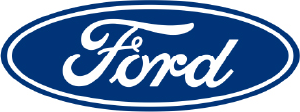It’s the power of our ports plus our land, location and local partnerships that make Thames Freeport unique. Comprising Britain’s most globally connected ports and logistics park and Ford’s world-class engine plant, Thames Freeport offers the infrastructure, investment and inspiration needed to transform supply chains, decarbonise operations and leave a lasting legacy for local communities.
Together with our partners, we’re aiming to stimulate trade, drive innovation, support energy transition, and transform the lives of people in London and the boroughs to its east.
COMMON VISION, COLLECTIVE GOALS
THAMES FREEPORT PARTNERS

DP World London Gateway is the UK’s largest and most integrated logistics facility, with a container port handling over 2 million units per year, a rail terminal with over 60 weekly services and a 9.25 million square foot, well connected, logistics park.
Leading the way for container shipping and distribution worldwide, the port links cargo to over 130 ports in over 65 countries and is currently undergoing the development of a £350m all-electric 4th berth to cater for continued growth and expansion.

Ford Dagenham is a major automotive factory located in Dagenham, London, operated by the Ford of Britain subsidiary of Ford Motor Company. The plant opened in 1931 and has produced 10,980,368 cars and more than 39,000,000 engines in its history.
It covers around 475 acres and it continues as a major production site with the capacity to assemble 1.4 million engines a year. In 2008, the plant produced around 1,050,000 engines and was the largest producer of Ford diesel engines globally.

The Port of Tilbury is the largest of the Thames ports. Tilbury handles 16,000,000 tonnes of cargo per annum across 31 independent working terminals including the UK’s largest grain terminal and paper hub. The port is also a crucial logistics hub for the construction, automotive, and food & drink sectors. Cargo handling here is fast, smart, and sustainable.





